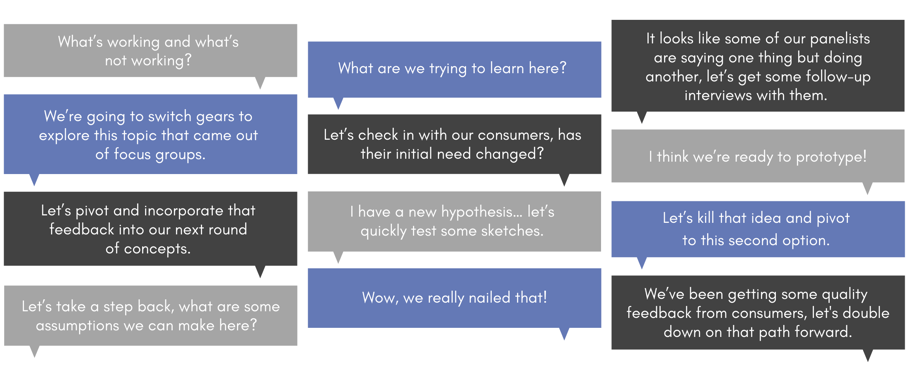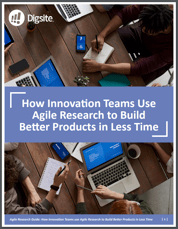As we all know, successful insights teams lead with agility and embrace the unexpected. Research pros at large corporations and startups alike share the belief that when you kick off with the right mindset, agile research can work even harder for you. In our most recent webinar, we talked about leading successful insights teams by enabling agile ways of working.
Deciding to venture into qualitative and quantitative research starts with a learning plan. Get your team together to understand the outcome you’re seeking and the pieces that need to come together to get you there. Throughout each phase of your plan, you’ll be refining and implementing learning loops to test, learn, iterate, adjust and re-test. Learning loops provide the evidence to show you that you’re making progress.
The Catch
There’s no such thing as a perfect learning loop! In fact, they’re rarely pre-planned. Learning loops truly encompass the definition of agility by performing rapid, iterative learning cycles, seeking progress over perfection. By the time that your research has concluded and you’ve reached the outcome you were hoping for, your team can feel confident that a body of evidence has been built up over time.
Instead of just planning where initial learning loops should be placed, coach your team to recognize a learning opportunity when one appears. Focus on embracing the transformation that happens between point A and point B.
Your Toolbox
Before jumping in, remember to assess your resources. We all have an array of methods and strategies in our back pocket that make up a dynamic toolbox. Pick a method that will get you started in chasing that hypothesis. We love blending new school innovation and iterative technology platforms in addition to those old school, tried and true methods. Agile research teams are always evolving, growing and expanding that toolbox.
The Path From A to B
The path your team takes could start one way, then take a detour after finding a new North Star. We may learn that our initial assumption isn’t a winner and that's okay. The focus is your end goal, and not necessarily every detail that will get you there. It’s a question of prioritizing what you need to learn, refining over time, recognizing progress with each learning loop and sharing the insights that are contributing to the growing body of evidence.
With each step in the process, uncertainty is decreasing and flexibility is being rewarded. Quick decision-making is key. You’ll find yourself identifying with the statements and questions below (that we’ve heard hundreds of our clients say over the years):

Getting There
Throughout those iterative learning loops, we need to remember to pause, take what we learned and decide what the next best step is. To keep going, to pivot and adjust the plan, to move on from an idea or to explore something else entirely?
Some ideas and concepts are inevitably going to be left in the dust. But, that means the ones that persevere are the strongest and prove that you're clicking with your audience. Building up your evidence, piece by piece, is what takes you from point A to point B. You simply cannot plan perfection, but you can get pretty darn close when you stay agile and follow where the path takes you.

To learn more about how some of today’s leading organizations are using agile research to
delight their customers and drive competitive advantage, check out our eBook:
How Innovation Teams use Agile Research to Build Better Products in Less Time.




